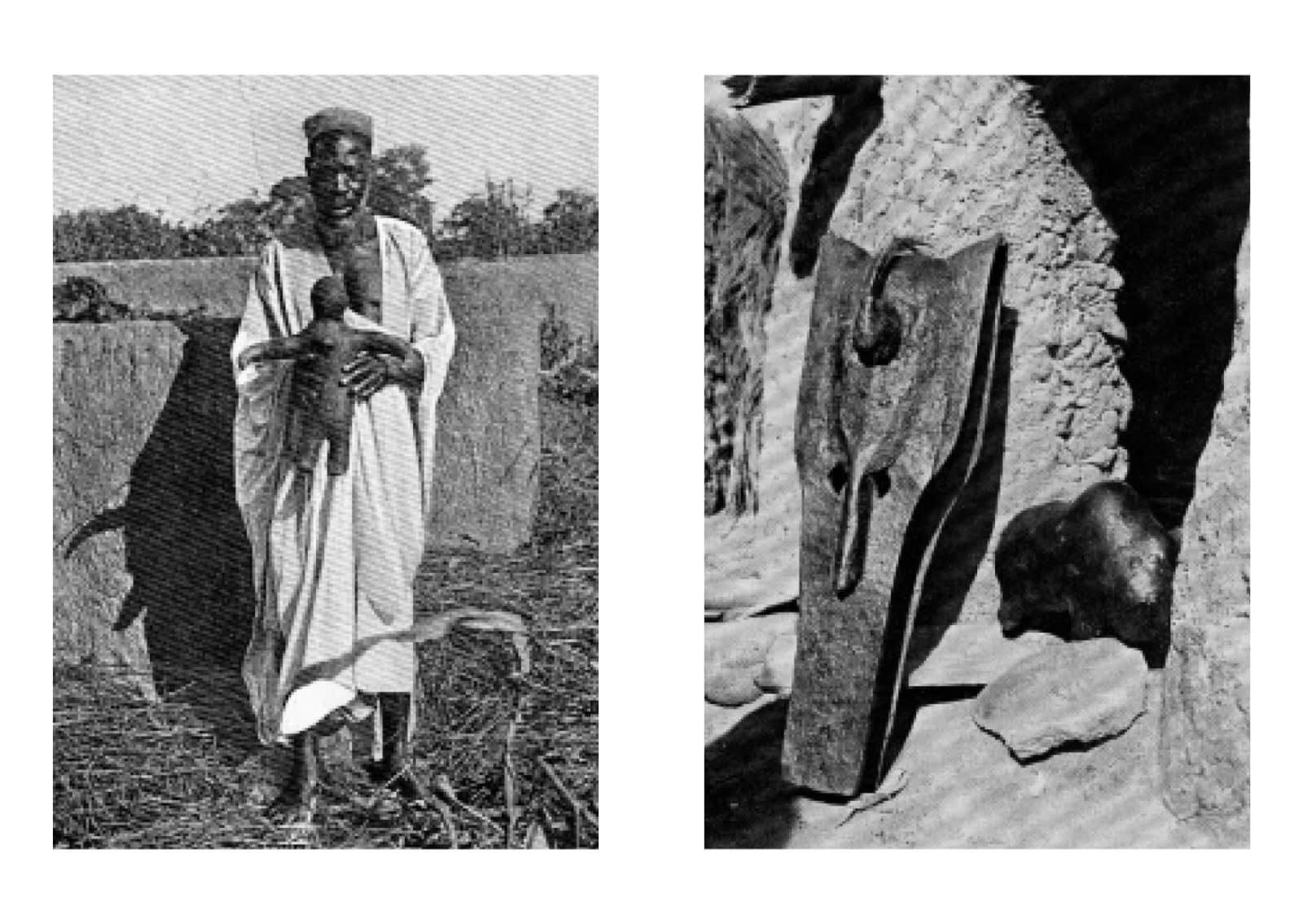
One of the crowd pleasers during our “Manifestations” exhibition was a wondrous zoomorphic sculpture positioned prominently in the gallery’s vitrine. Many passerby stopped to have a look. At one time, a dog was even looking very puzzled at this enigmatic figure. While in Mali the object would have been hidden from public view with access to it restricted to a very limited public, it took centerstage in Antwerp! If there was one object that intrigued visitors it was this one, so I thought I shared its story with a dedicated newsletter. If you want to learn more about the inspirational woman that brought it back from Mali in the late 1950s, Marie Ange Saulnier-Ciolkowska, you can find a short biography of her, written by Hermione Waterfield, here.
Among the most sacred objects among Mali’s Bamana people is the “boli”, which plays an essential role within their spiritual life. Boliw have attracted much attention from Western collectors due to their amorphous forms and unusual materials. Its cracked surface obscures the exact identification of the organic and inorganic materials assembled to create the “boli” (pl.: “boliw”) presented here. They are not carved, but rather assembled and molded around a wooden armature core that is wrapped in white cotton cloth, around which clay and sacrificial materials are encrusted.

Altar figure (“boli”)
Anonymous Bamana artist
Early 20th century, Mali
Wood, plant fibers, blood, clay, cloth
35x40 cm
Collected during a series of journeys to Mali
in the late 1950s by Marie-Ange Ciolkowska
Collection Marie-Ange Ciolkowska (1898-1992), Paris, France
Kunsthandel M.L.J. Lemaire, Amsterdam, The Netherlands
Private collection, The Netherlands
Private Collection, Brussels, Belgium
This “boli” has four short “legs” upon which it sits, as well as a single hump rising from the top. The creature that a boli represents is unidentifiable, but many take on the loose zoomorphic form suggested by this work, while others may be anthropomorphic. Hypothetically, they do resemble a bush cow or hippopotamus. The main function of a “boli” is to accumulate and control the naturally occurring life force called nyama for the benefit of the community. All the ingredients from which it is composed possess this important spiritual energy. The encrustation may include the blood of chickens or goats, chewed and expectorated kola nuts, alcoholic beverages, honey, metal, animal bones, vegetable matter, and sometimes millet. As the encrustation cracks and hardens throughout the years, it gives the impression that these ingredients are tightly packed within the “boli”. As the sacrificial materials accumulate over time, each added layer affords the structure greater spiritual power.

Left: The Bamana man Zanké and his anthropomorphic “boli” (published in: Henry (Joseph), “L’âme d’un peuple africain: Bambara.”, Münster, I.W., Aschendorffschen Buch, 1910). Right: Bamana kono mask and its “boli”, 1909 (published in Henry (Joseph), “L’âme d’un peuple africain: Bambara.”, Münster, I.W., Aschendorffschen Buch, 1910, p. 152).
As repositories of enormous spiritual power or “nyama”, “boliw” were viewed with awe and fear. They were exclusively used as altars by the Komo Society, a men’s association of priests, elders, and blacksmiths that forms the central Bamana social institution. The association’s members progressed through induction processes that could span decades. Over time, they attained a deeper and deeper esoteric knowledge of the natural and spiritual world. Sequestered in shrines or in the dwellings of priests, the “boli’s” amorphous form keeps its sacred secrets hidden from the uninitiated and could only be safely handled by those association members equipped with the most exclusive and secretive expertise and knowledge. Their form is intended to be visually inaccessible to all but the initiated, who alone knew the ritual procedures for harnessing their awesome powers. Even far removed from its original context, this disquieting and powerful object has kept its secrets.

Theaster Gates, “Boli, a Portion of the Team Lives in Heaven” (2014), installation view in ‘True Value’ at the Fondazione Prada, Milan (photo by Delfino Sisto Legnani Studio, image courtesy Fondazione Prada).
In 2015, the American artist Theaster Gate’s included a boli statue in his solo exhibition at the Fondazione Prada’s Milan location. In the foundation’s Cisterna space, the artist included a ceramic display “Bili, a Portion of the Team Lives in Heaven’ (2014), in which human-like figures surround a boli on a pedestal. Gates sees such spiritual objects as similar to the tools found in hardware stores (which he recreated in another room of the exhibition), that are also channeled by what he refers to as everyday ’shamans’. “These people can range from storeowners to politicians, though all have a role in shaping life (whether materially or socially) in a way that either creates or destroys the conditions necessary to fostering community”, dixit the artist.
